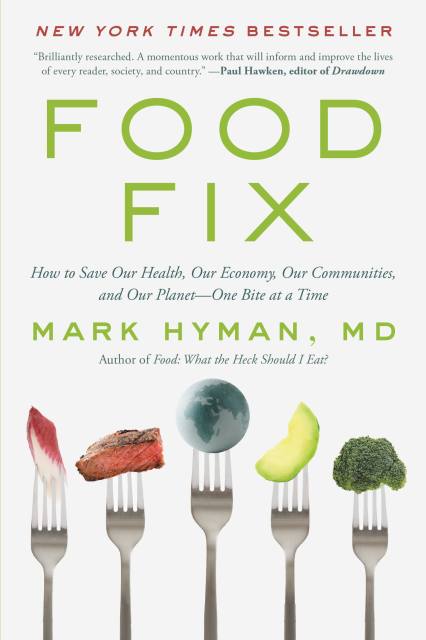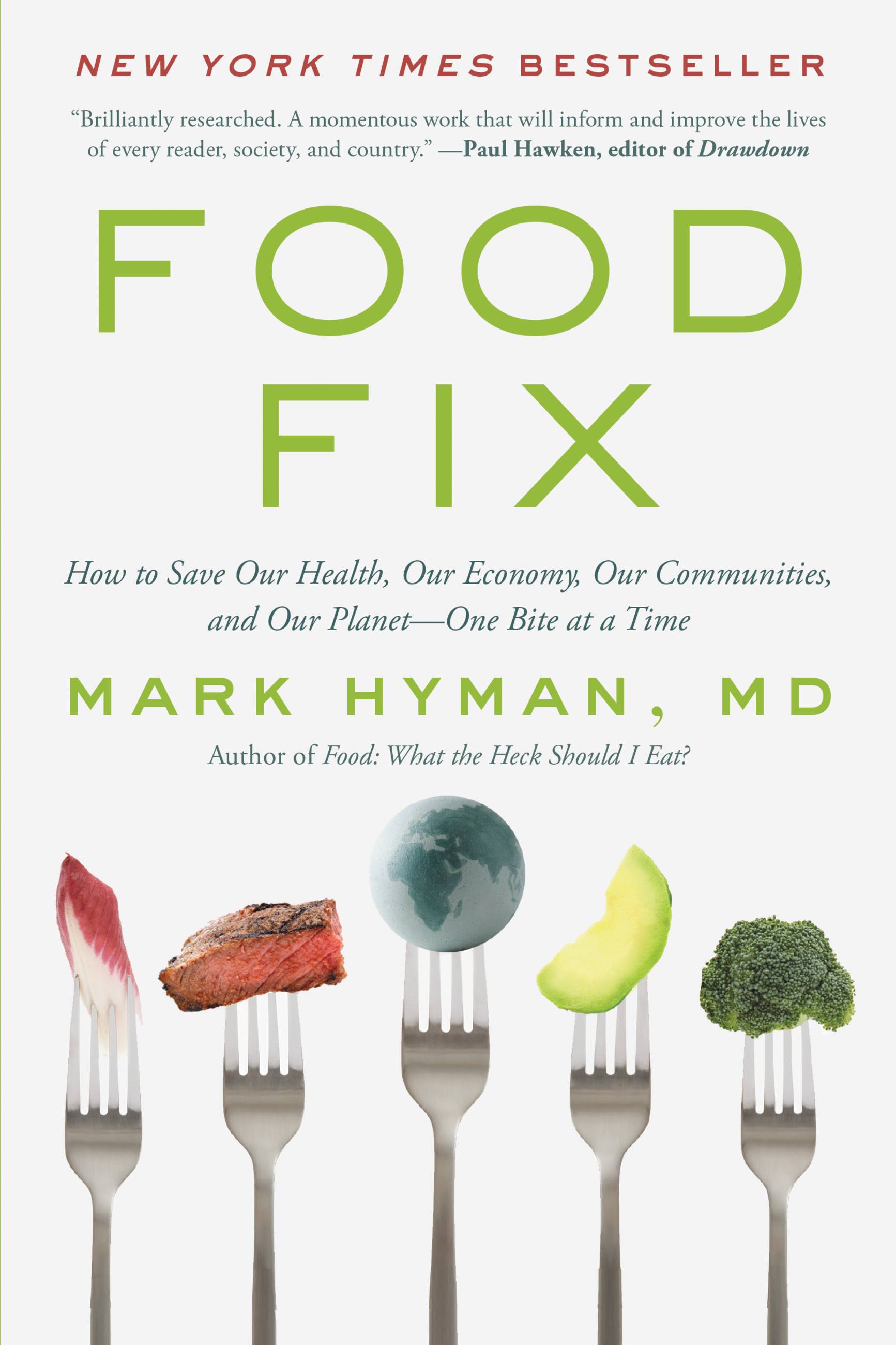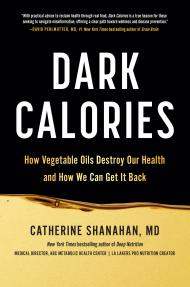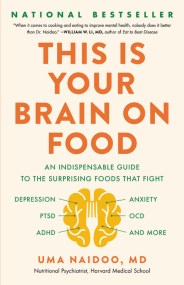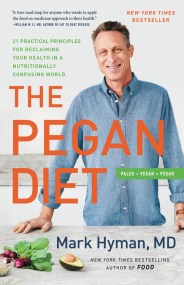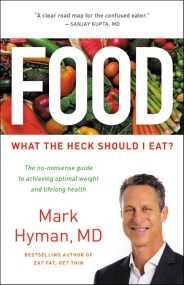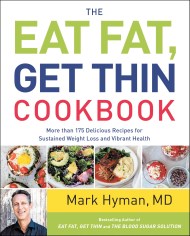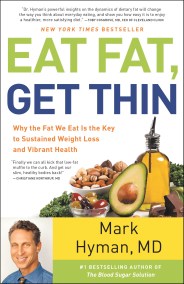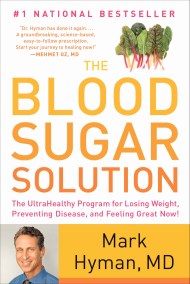By clicking “Accept,” you agree to the use of cookies and similar technologies on your device as set forth in our Cookie Policy and our Privacy Policy. Please note that certain cookies are essential for this website to function properly and do not require user consent to be deployed.
Food Fix
How to Save Our Health, Our Economy, Our Communities, and Our Planet--One Bite at a Time
Contributors
Formats and Prices
Price
$18.99Price
$23.99 CADFormat
Format:
This item is a preorder. Your payment method will be charged immediately, and the product is expected to ship on or around February 8, 2022. This date is subject to change due to shipping delays beyond our control.
Also available from:
An indispensable guide to food, our most powerful tool to reverse the global epidemic of chronic disease, heal the environment, reform politics, and revive economies, from #1 New York Times bestselling author Mark Hyman, MD—"Read this book if you're ready to change the world" (Tim Ryan, US Representative).
What we eat has tremendous implications not just for our waistlines, but also for the planet, society, and the global economy. What we do to our bodies, we do to the planet; and what we do to the planet, we do to our bodies.
In Food Fix, #1 bestselling author Mark Hyman explains how our food and agriculture policies are corrupted by money and lobbies that drive our biggest global crises: the spread of obesity and food-related chronic disease, climate change, poverty, violence, educational achievement gaps, and more.
Pairing the latest developments in nutritional and environmental science with an unflinching look at the dark realities of the global food system and the policies that make it possible, Food Fix is a hard-hitting manifesto that will change the way you think about—and eat—food forever, and will provide solutions for citizens, businesses, and policy makers to create a healthier world, society, and planet.
What we eat has tremendous implications not just for our waistlines, but also for the planet, society, and the global economy. What we do to our bodies, we do to the planet; and what we do to the planet, we do to our bodies.
In Food Fix, #1 bestselling author Mark Hyman explains how our food and agriculture policies are corrupted by money and lobbies that drive our biggest global crises: the spread of obesity and food-related chronic disease, climate change, poverty, violence, educational achievement gaps, and more.
Pairing the latest developments in nutritional and environmental science with an unflinching look at the dark realities of the global food system and the policies that make it possible, Food Fix is a hard-hitting manifesto that will change the way you think about—and eat—food forever, and will provide solutions for citizens, businesses, and policy makers to create a healthier world, society, and planet.
Series:
-
"Dr. Hyman deftly describes the web of destruction caused by our modern food system -- and how to reverse the tide and save our health and planet. His most important book to date."Dariush Mozaffarian, MD, DrPH, Friedman School of Nutrition Science & Policy, Tufts University
-
"The revolution starts with what we put on our plates and into our bodies. But even before that, it starts with Food Fix. Read this book if you're ready to change the world."Tim Ryan, US Representative (OH)
-
"Food Fix is a wake up call, alerting us to the flawed food system that ensnares us all. Dr. Mark Hyman has not just the diagnosis but the remedies we need. I'm hoping his crucial message will give us a recipe that can fix our food."Daniel Goleman
-
"Dr. Hyman is a modern-day Hippocrates, a pied piper with a clarion call to heal ourselves with healthy food and good habits, as well to rethink and realign our food system to support greater health in the world. His voice is at once fresh, powerful, informed, passionate, and encouraging, and his book a must read for us all."Walter Robb, Stonewall Robb Advisors, Former co-CEO of Whole Foods Market
-
"Dr. Mark Hyman pulls no punches in this eye-opening journey through the food system, revealing the jungle behind the grocery aisle, farmer's market, cafeteria, and anywhere we find food. While in his past books he helped us realize the joy and benefits of healthy eating, this book takes a deep dive into the hidden politics, vested corporate interests, and broken regulations that create confusion and distrust about what we are fed, both in terms of food and information. Food Fix argues that food inequities increase risks for chronic diseases, which contributes to social unrest, mental health disorders, educational inequities, and even violence and crime. The good news is that with each ugly reveal, Dr. Hyman proposes practical solutions. If you want to know what's under the sheets of our food system and what needs to be done to repair the mess, read this book. If you are part of the problem: run -- Food Fix is coming after you. I highly recommend the fascinating probe into the world behind our food."William W. Li, author of Eat to Beat Disease
-
"Our food system went to Dr. Mark Hyman for a check-up, and in Food Fix he diagnoses chronic influence-peddling, inflammation of the profit motive (the money-grubbing has metastasized), sclerosis of the lower politician, and a severely ruptured public interest. Read this book. Then take two actions and tweet him in the morning."Ken Cook, President and Co-founder, Environmental Working Group (EWG)
-
"Few issues are as important as the food the world grows, transports, wastes, and consumes, and few people can capture this picture, and can be as creative with solutions as Mark Hyman. This is a powerful call to arms."Kelly D. Brownell, PhD, Director of World FoodPolicy Center
-
"Food Fix by Dr. Mark Hyman is a provocative yet transformational analysis of our food system, from farm to table. While some of the proposals to change our food system are controversial, the book represents one of the first substantive and thoughtful attempts to tie the often stove-piped subjects of food, medicine, health, and sustainable agriculture into a holistic approach to feed a hungry and healthy global population."Dan Glickman, Former Secretary of Agriculture (1995-2001)
-
"Dr. Mark Hyman brilliantly unmasks the corruption in our food system. Read this book to impact your health and the world around you."Vani Hari, author of The Food Babe Way
-
"Mark Hyman may be our leading physician social visionary. In his most important book yet, he shows how our food economy could be reshaped to make us more prosperous and, more important, healthier."Lawrence H. Summers
-
"An authoritative, illuminating account of how greed and cynicism have poisoned our food and devastated our minds, our bodies, and our planet, paired with inspiring examples of how we can reverse the damage, restore our health, and heal our world. Food Fix is profoundly disturbing and vitally important."James S. Gordon, MD, psychiatrist and author of The Transformation
-
"In spite of daily breakthroughs in medicine, we continue to see an increase in cancers, heart disease, and other chronic conditions. It's time to consider not just what we eat, but how it's farmed and how we are using our land in the process. Food Fix gives us an outline of what we need to consider to both fulfill our needs and preserve our planet."Governor Christine Todd Whitman, former Administrator of the EPA
-
"Food Fix shines a light on what is happening with our food system while sharing ways for readers to make a real change. Dr. Hyman's book inspires us to set out on a path to improve our personal health and, at the same time, the health of our planet."Gisele Bündchen, author of Lessons: My Path to a Meaningful Life and global environmentalist
-
"If you're overwhelmed by the scale of the world's problems, and wondering what you can do in your own life to start, Food Fix is for you. Dr. Hyman deftly connects the dots between education, health, climate science, and the food we eat every day, showing that the choices we make about the food we put on our plates have consequences that ripple around the world."Arianna Huffington, founder and CEO of Thrive Global
-
"Our global food system has produced an unhealthy planet, thanks to the food industry's push for unsustainable ultra-processed food. Food Fix highlights the need to focus on what we put on our plates as a way to improve our diets, our health, and the health of the planet."Barry M. Popkin, PhD, W. R. Kenan, Jr., Distinguished Professor of Nutrition, University of North Carolina at Chapel Hill
-
"Mark Hyman has been teaching us how to eat healthier, feel better, and live longer for years. While nutrition is still a major focus in Food Fix, he also encourages us to think about how our food is produced, prepared, and purchased. I highly recommend it. It is a great read."Ann M. Veneman, Former Secretary of Agriculture
-
"A tour de force read that exposes how food and food systems are at the center of our most pressing problems, impacting the health of people, our environment, and even our national security. Food Fix boldly demonstrates how changing what -- and how -- we eat can literally change the world."Bill Frist, MD, Former Majority Leader US Senate
-
"In an increasingly polarized and anxious world, Food Fix is a beacon of hope and inspiration, serving up a pragmatic and clear-eyed assessment of where we are, and how changing the way we eat and think about food, can take us where we need to go."Deepak Chopra
-
"Dr. Hyman's diagnostic skills are on full display in this brilliant book. He's connected the pandemic of chronic human disease with the many expressions of our environmental crisis, for which his urgent prescription is regenerative agriculture. Reading this book should give all of us great hope for personal and planetary healing, and thank you, Mark, for shining your light on our path forward."Tom Newmark, Chairman of The Carbon Underground and past Chair of Greenpeace Fund US
-
"Dr. Hyman's provocative perspective on the power of food to fix us and our planet is an influential read."Mehmet Oz, MD
-
"It may have occurred to you that you need to change your diet, for your own health or the planet's. This volume will give you both a nudge in that direction, and some straightforward guidance for getting underway!"Bill McKibben, author of Falter
-
"Dr. Hyman is a unique leader in the food world, building bridges between disparate viewpoints, creating connections between different worlds, and using this to construct an original plan for how we can all move forward towards better health, not only for ourselves but also for the planet. Food Fix ranges masterfully across different fields, offering, ultimately, a sense of hope and an inspiring vision for the future."Nina Teicholz, author of The Big Fat Surprise
-
"Food Fix is a brilliantly researched feast of facts about the most critically overlooked cause of chronic disease, global warming, and environmental degradation. It is also the Fix, demonstrating that the food sector is an astonishing yet overlooked basis for transforming agriculture, health care, mental illness, biodiversity loss, education, and economic well-being. It is a rare book, a momentous work that will inform and improve the lives of every reader, society, and country."Paul Hawken, editor of Drawdown
- On Sale
- Feb 8, 2022
- Page Count
- 400 pages
- Publisher
- Little Brown Spark
- ISBN-13
- 9780316453141
Newsletter Signup
By clicking ‘Sign Up,’ I acknowledge that I have read and agree to Hachette Book Group’s Privacy Policy and Terms of Use
